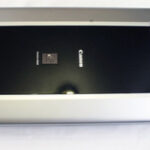Pet microchips contain a registration number and the phone number of the registry for the particular brand of chip. A handheld scanner can read the radio frequency wave of the chip and display this information. The animal shelter or veterinarian that scans the pet can contact the registry to get the owner’s name and phone number.
Microchips are designed to work for 25 years and do not need to be charged or replaced. As a responsible pet owner, you might microchip your pet as an alternate or backup method of identification to a collar. Microchips provide an extra level of protection in case your pet loses his collar and tags. Providing your pet with both tags and a microchip can help ensure a happy reunion if your pet is lost. It is important that the microchip registry has your up-to-date contact information.
1) If your pet has not been micro-chipped, many veterinarians and some animal shelters implant microchips for a small fee. This is done with a large-bore needle and does not require anesthesia. A microchip is about the size of a grain of rice. It consists of a tiny computer chip housed in a type of glass made to be compatible with living tissue. The microchip is implanted between the pet’s shoulder blades. The process is similar to getting a shot and little to no pain is experienced.
2) If you don’t know if your pet has been micro-chipped, find a vet or animal shelter that can scan your pet.
3) If your pet has been micro-chipped, read your pet’s microchip documentation paperwork and look for contact information for the microchip registry. If documentation is not readily available, you can contact the veterinarian or shelter where the chip was implanted. Some registries provide a tag for your pet’s collar with a contact phone number. You can then call the registry or go online to the company’s website to provide the new contact information.
In 2009, the petmicrochiplookup.org search engine, sponsored by the American Animal Hospital Association, was put on line. It has three of the five major U.S. registries as participants. On this website, you enter the microchip ID and click “Submit”. This will display the company the microchip is enrolled with and their phone number.
No method of identification is perfect. The best thing you can do to protect your pet is to be a responsible owner. Keep current identification tags on your pet at all times and consider micro-chipping as reinforcement. If your pet does become lost, more identification can increase the odds of finding your beloved companion.
Sources: en.wikipedia.org, www.petmicrochiplookup.org, www.about.com, www.ehow.com, www.humanesociety.org




